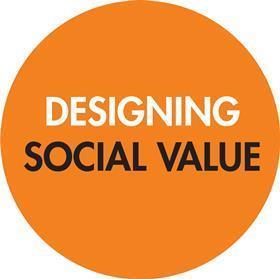Incorporating inclusive design as standard enables clients to put social value, equity, and inclusion at the heart of their developments, writes Pareisse Wilson

As someone with a neurodivergent condition, I know first-hand how inaccessible design can be and how it can exclude people. Making sure everyone feels they can use a space independently is so important. There’s nothing more frustrating than when I enter a space and there are no maps and directional arrows to help me navigate the building.
Someone who is anxious, someone who has dementia, someone experiencing migraines, someone with a health condition that requires regular trips to facilities such as toilets, someone who is D/deaf will feel more in control and more welcome when they know how to navigate the environment. The incorporation of inclusive design features is not only for those with accessibility requirements; it is fundamentally, good sustainable design.
It has been my personal and professional mission to encourage our sector to consider the multidimensional nature of human diversity and, in doing so, remove barriers to access across the places we all live, work and visit.
A huge landmark in the pursuit of inclusivity and accessibility in design is the launch of the RIBA’s Inclusive Design Overlay to the RIBA Plan of Work. It is a project I have had the privilege to lead from inception, alongside Ed Warner, CEO at Motionspot.
An authoritative resource for anyone involved in the built environment sector, the Overlay is the product of years of multidisciplinary collaboration, including input from people with lived experience and experts across 25 built environment professions. It will equip Project Teams, comprising Clients, Project Management, Design, Construction and Asset Management Teams with the knowledge they need to ensure inclusion is considered at every stage of designing and delivering a building or public realm space.
As built environment professionals we must use every tool at our disposal to break down barriers to access and improve social mobility
The Overlay is an essential tool to make our built environment more inclusive, resilient, and sustainable in the spirit of the RIBA Inclusion Charter which calls for a commitment to ‘embedding inclusive design in all projects, contributing to the development of inclusive environments’.
The Overlay encourages Project Teams to look beyond the application of building regulations and apply best practice in terms of inclusive design standards, guidance, and the latest research. It also encourages the engagement of User Groups with lived experiences of a diversity of characteristics such as disability, faith, and neurodiversity. Another key pillar is identifying when to engage specialists such as Inclusive Design Consultants on projects.
For me, inclusive design means making buildings accessible to everyone, regardless of people’s identities or characteristics such as age, sexual orientation, gender, health condition, disability, neurodiversity, race, and religion. However, inclusive design is about more than just a usable experience in a building or public space. Enabling people to participate equally, confidently, and independently in everyday activities is a vital part of creating a sense of belonging and making society more equitable.

The concept of social value will be familiar to those working in the public sector who are often tasked with considering the impact of their procurement decisions as a result of the Social Value Act, 2010, and the impact it can have on the well-being of individuals, communities, and the environment. Applied more broadly, social value means looking beyond solely creating value, and instead puts the emphasis on how social mobility benefits us all.
In addition to other important initiatives, such as supporting ex-offenders or people with disabilities into work, through to enrolling in environmental protection schemes, businesses can demonstrate their commitment to social value through their building assets. When designing a new building, or retrofitting an existing one, clients who prioritise inclusive and accessible design are investing in future-proofed, resilient spaces that work for everyone. Inclusive environments such as new workspaces can facilitate the creation of jobs, career, and business opportunities in the community and in turn, promote social well-being for everyone.
Inclusion in design is linked to global sustainability. Making cities and human settlements inclusive, safe, resilient, and sustainable is one of the UN’s 17 Sustainable Development Goals. Designing inclusively can future-proof assets from the outset and save the high environmental carbon emission cost of retrofitting later. This also makes it a financially savvy decision for clients. It is therefore imperative that inclusive design is standard practice.
Spaces designed for all stages of life, that account for changing accessibility requirements as people age, are crucial for creating sustainable environments. Accessible spaces are more flexible and adaptable for different users and uses, and evidence shows that their thoughtful design means people use them more efficiently.
As built environment professionals we must use every tool at our disposal to break down barriers to access and improve social mobility, and businesses should harness their power to make that change for the benefit of both people and planet.
>> Also read: Designing and delivering neurodivergent-friendly spaces
>> Also read: Designing for the mind
>> Also read: Clementine Blakemore Architects completes inclusive holiday accommodation
Postscript
Pareisse Wilson is Project Lead and Lead Author of the Inclusive Design Overlay to the RIBA Plan of Work, and Inclusive Design Strategy Lead at award-winning accessible design specialist Motionspot.
















No comments yet